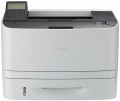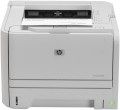First page print time
The time from the receipt of a print command to the exit from the printer of the first page printed in black and white, in other words, how long after pressing the "Print" button, the user will receive the first page. Most often indicated for draft (fastest) print mode, higher quality will take longer. You should pay attention to this parameter if you often need to print small documents (on one or several pages) on the printer.
Duplex printing
Automatic duplex printing function .
In this mode, the user does not need to manually turn over each sheet and send it to print on the second side — this will be done by the printer mechanism, and materials printed on both sides will immediately enter the output tray. This not only saves time, but also eliminates confusion: a person can make a mistake and print one of the sides “upside down”, automation does not allow such errors.
Monthly resource
The maximum number of pages the printer can print in a month while still operating at full capacity.
Mono cartridge resource
The maximum number of pages that the printer's ink (toner) can print. The value is rather conditional, in reality the deviations from the norm are very large (up or down). In inkjet printers, the cartridge life is relatively small and amounts to several hundred prints. In laser and LED devices, the bill is already in the thousands.
Cartridge model
The types of cartridges (both black and white and colour) used in the printer. Some printer models are able to work with "non-native" cartridges, but this feature usually refers to undocumented features, and the manufacturer's warranty covers only specific types of cartridges. So use "non-native" models with caution.
Data transfer
—
Connection to PC (USB). Possibility of wired connection with PC via USB interface. Do not confuse this function with the USB connector described above: in this case, the peripheral device is the printer itself. This option is the most popular way of wired connection to a computer nowadays: there are USB ports in almost any PC or laptop.
—
Network connection (LAN). Possibility of wired connection to a local computer network through a standard LAN connector (using an Ethernet cable). With this connection, the printer becomes available to all computers on the network — this is very convenient for offices, co-working spaces and other places where different people have to use printing from different computers. Note that the connection to the network can be carried out both through one of the computers of this network, and through a common router; in the second case, the printer remains operational regardless of which computers on the network are currently turned on. Compared to another connection option — Wi-Fi — a wired connection is less convenient due to the need to run a cable; however, it is cheaper, and the connection is as reliable as possible.
—
Wi-Fi. A wireless technology that was originally designed to work with computer networks, but nowadays is also used for direct communication between devices (
Wi-Fi Direct, see
...below). Usually, printers with Wi-Fi can work as network devices — when communication is carried out via LAN, and all computers on the network have access to the printer; but the possibility of direct connection of gadgets is less common. However, the specific functionality of Wi-Fi anyway needs to be specified separately.
— Card Reader. Slot for reading memory cards, usually, with the function of direct printing (see above). In this case, this function is convenient primarily because memory cards are widely used in modern photo and video cameras; thus, the card reader allows you to quickly and conveniently print the footage — just remove the card from the camera and install it in the printer. However, this function can be useful for exchanging data with other devices — for example, laptops; and in some printer models it is even possible to work in the mode of an external card reader for a PC.
— USB. USB connector that allows you to connect various external peripherals to the printer. Most often used for direct printing from flash drives and other drives, however, it can also be used for other purposes — for example, for updating firmware, diagnosing problems, etc. Do not confuse this function with connecting to a PC via USB when the role of a peripheral device is played by the printer itself (see below for details).
— Bluetooth. Direct wireless communication technology between different devices. In printers, it is used mainly for the traditional purpose — to receive materials sent for printing from external devices. One of the advantages of such a connection is that it allows you to work not only with computers, but also with portable gadgets like smartphones and tablets: built-in Bluetooth modules for such gadgets are almost mandatory, but wired connection methods are most often not available at all. Yes, and it can be more convenient to communicate with a PC or laptop in this way: Bluetooth does not require wires and works confidently at a distance of about 10 m.
— NFC. Short-range wireless technology — up to 10 cm. In printers, it is usually used as an auxiliary function to simplify communication via Wi-Fi and Bluetooth: instead of setting up the connection manually, just bring an NFC gadget to the printer and confirm the connection. And in some models, in this way (by bringing the device to the printer), you can even immediately send materials for printing; To do this, usually, you need to install a branded application on an external gadget.
— Wi-Fi Direct. A feature found on models with built-in Wi-Fi modules (see above). Direct support allows you to connect other Wi-Fi devices (laptops, smartphones, cameras, etc.) to such a printer directly, without using a router and a local network. This can be especially convenient if there is no network equipment, or if it needs to be additionally configured. The functionality of the Wi-Fi Direct connection is generally similar to Bluetooth (see above); the main difference is that Wi-Fi provides a faster and more reliable connection, with longer range. This is especially true when transferring large amounts of data — for example, sending large documents for printing. In addition, such a connection is better suited for direct printing from cameras — Wi-Fi is traditionally used for wireless connection in this technique.
— AirPrint. Same function as above (Wi-Fi Direct). Allows you to connect to the device without using a router. However, in this case, we are talking about connecting Apple equipment — iPhone phones, tablets, Mac laptops.Cloud print
Cloud print service supported by the printer. Specified only if the device is capable of working with cloud services directly without connecting to a PC.
The general principle of such printing is that documents sent for printing are stored on a server on the Internet. Thus, the availability of the printer is not limited to the local network — you can send documents for printing from anywhere in the world where there is access to the World Wide Web. In addition,
cloud-based printers make it easy to share with others.
Screen
The type of screen provided in the design of the printer. This parameter is indicated by two points — colour (monochrome or
colour display), as well as the absence or
presence of a touch screen(if only colour is indicated, then the screen is not touch).
Chroma determines the features of the image on the display. Monochrome (black and white) screens allow you to display a lot of different information, and are inexpensive. On the other hand, such a display is poorly suited for viewing drawings and photographs sent for printing — for such purposes it is better to use more expensive, but more functional colour screens.
As for touch displays, they provide additional convenience in management and expand its capabilities. Various controls can be displayed on such a screen — sliders, lists, text menus, etc.; operating them with touches on the display is easier than using traditional control panels with hardware buttons. On the other hand, the presence of a sensor affects the cost of the display, and it makes sense to use this feature mainly in advanced printers with an abundance of additional functions.
RAM
The amount of internal memory installed in the printer.
The main purpose of such memory is to store tasks sent for printing. This gives various additional features: printing when the computer is turned off, continuing to work after troubleshooting, pausing the process and resuming at will, etc. The more memory, the wider these printer capabilities (in particular, large volumes allow you to store more tasks ).
Note that we are talking about the built-in memory; if the printer also has a hard drive (see below), its capacity is specified separately.

